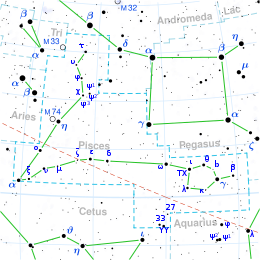
Alpha Herculis, also designated Rasalgethi and 64 Herculis, is a multiple star system in the constellation of Hercules. Appearing as a single point of light to the naked eye, it is resolvable into a number of components through a telescope. It has a combined apparent magnitude of 3.08, although the brightest component is variable in brightness. Based on parallax measurements obtained during the Hipparcos mission, it is approximately 360 light-years (110 parsecs) distant from the Sun. It is also close to another bright star Rasalhague in the vicinity.

Red supergiants (RSGs) are stars with a supergiant luminosity class and a stellar classification K or M. They are the largest stars in the universe in terms of volume, although they are not the most massive or luminous. Betelgeuse and Antares A are the brightest and best known red supergiants (RSGs), indeed the only first magnitude red supergiant stars.

Chi Cygni is a Mira variable star in the constellation Cygnus, and also an S-type star. It is around 500 light years away.

UU Aurigae is a carbon star in the constellation Auriga. It is approximately 341 parsecs from Earth.
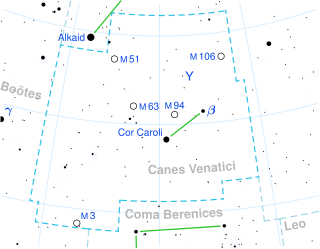
La Superba is a strikingly red giant star in the constellation Canes Venatici. It is a carbon star and semiregular variable.

R Centauri is a Mira variable star in the constellation Centaurus.

R Andromedae is a Mira-type variable star in the constellation Andromeda. Its spectral class is type S because it shows absorption bands of zirconium monoxide (ZrO) in its spectrum. It was among the stars found by Paul Merrill to show absorption lines of the unstable element technetium, establishing that nucleosynthesis must be occurring in stars. The SH molecule was found for the first time outside earth in the atmosphere of this star. The star is losing mass due to stellar winds at a rate of 1.09×10−6M☉/yr.
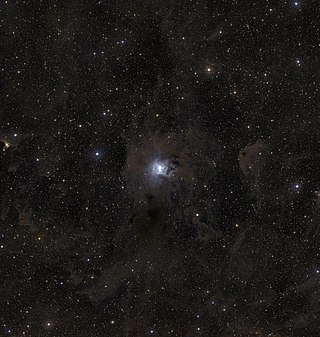
T Cephei is a Mira variable star in the constellation Cepheus. Located approximately 600 light-years distant, it varies between magnitudes 5.2 and 11.3 over a period of around 388 days.

Rho2 Arietis is an M-type red giant star in the northern constellation of Aries. With an annual parallax shift of 9.28 mas, it is approximately 350 light-years distant from the Earth.

NO Aurigae is a pulsating variable star in the constellation Auriga. It is an unusually-luminous asymptotic giant branch star about 3,500 light years away.
FG Sagittae is a supergiant star in the constellation Sagitta at a distance of 4000 light-years. When first noted in 1943, it was identified to be a variable star, and it was found to be a hot, blue star of stellar spectral type B in 1955. Since then it has expanded and cooled, becoming a yellow G-type star by 1991, and then further cooling to become an orange K-type star. It started to pulsate when becoming an A-type star with a period of 15 days. This period later increased to over 100 days.

89 Herculis is a binary star system located about 4,700 light years away from the Sun in the northern constellation of Hercules. It is visible to the naked eye as a faint, fifth magnitude star. The system is moving closer to the Earth with a heliocentric radial velocity of −28.5 km/s.
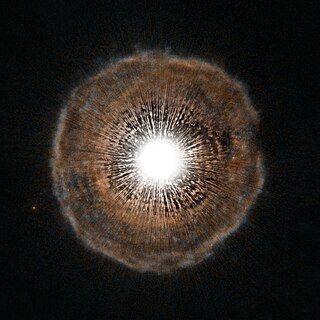
U Camelopardalis is a semiregular variable star in the constellation Camelopardalis. Based on parallax measurements made by the Hipparcos spacecraft, it is located about 3,000 light-years away from the Earth. Its apparent visual magnitude is about 8, which is dim enough that it cannot be seen with the unaided eye.

RU Camelopardalis, or RU Cam, is a W Virginis variable in the constellation of Camelopardalis. It is also a Carbon star, which is very unusual for a Cepheid variable.
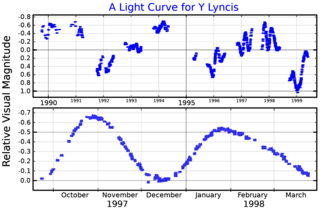
Y Lyncis is a semiregular variable star in the constellation Lynx. It is an asymptotic giant branch star of spectral type M6S, with a luminosity class of Ib, indicating a supergiant luminosity. It is around 1,160 light years away.

TW Horologii is a carbon star and semiregular variable in the southern constellation of Horologium, near the eastern constellation border with Reticulum. It has a ruddy hue and, with an apparent visual magnitude that ranges from 5.52 down to 5.95, is visible to the naked eye and one of the brightest carbon stars. Based on parallax measurements, it is located at a distance of approximately 1,370 light years from the Sun. It is drifting further away with a radial velocity of +14 km/s. In the past this star has been considered a member of the open cluster NGC 1252, but this now seems unlikely.

S Cassiopeiae is a Mira variable and S-type star in the constellation Cassiopeia. It is an unusually cool star, rapidly losing mass and surrounded by dense gas and dust producing masers.

IK Tauri or NML Tauri is a Mira variable star located about 280 parsecs (910 ly) from the Sun in the zodiac constellation of Taurus.

W Orionis is a carbon star in the constellation Orion, approximately 400 parsecs (1,300 ly) away. It varies regularly in brightness between extremes of magnitude 4.4 and 6.9 roughly every 7 months.
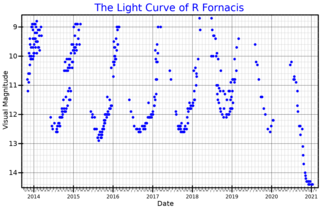
R Fornacis is a Mira variable and carbon star located in the constellation Fornax. It is around 1,800 light years away based on parallax measurements.
